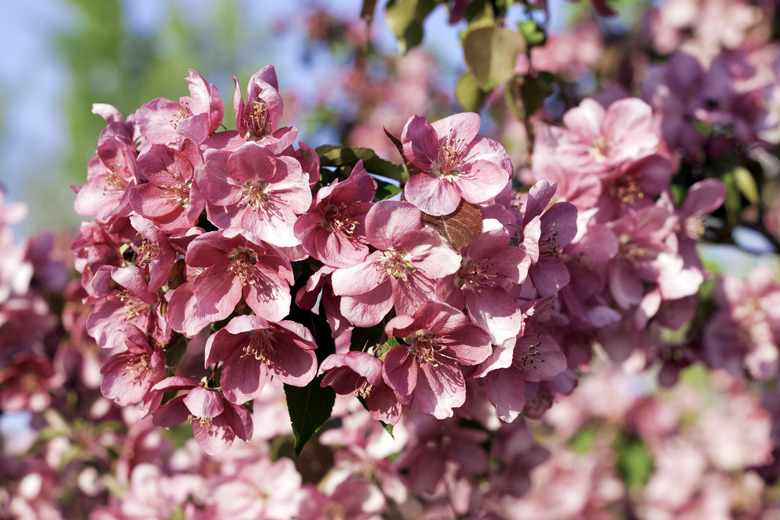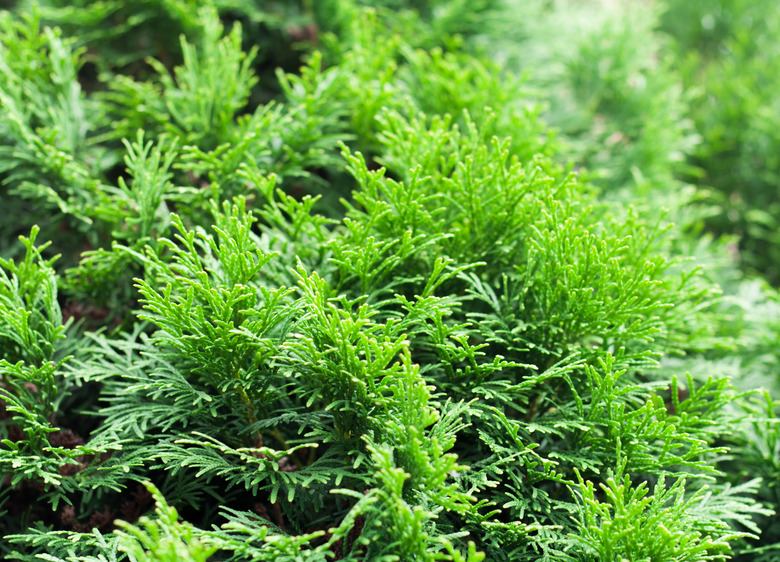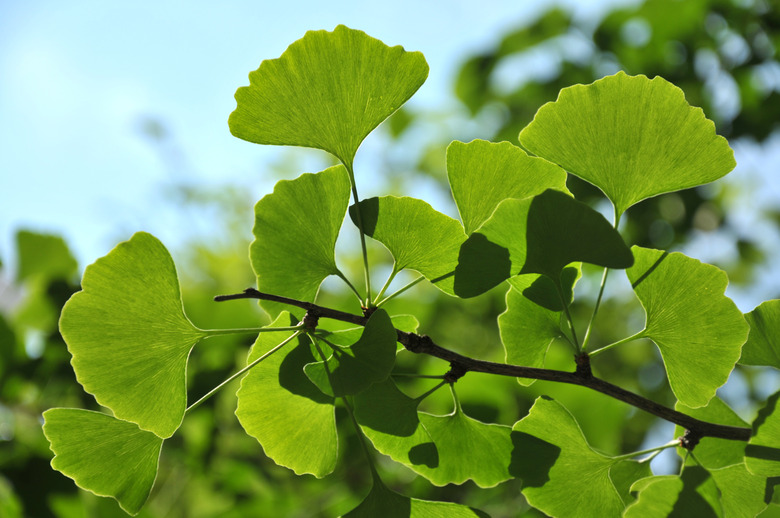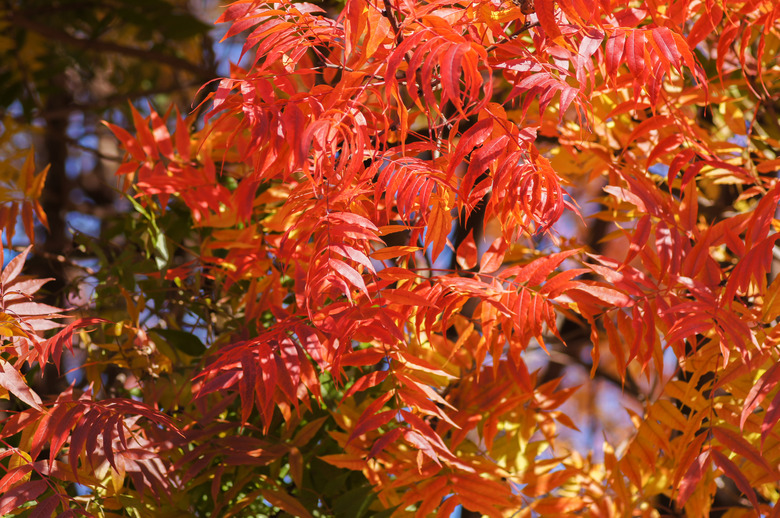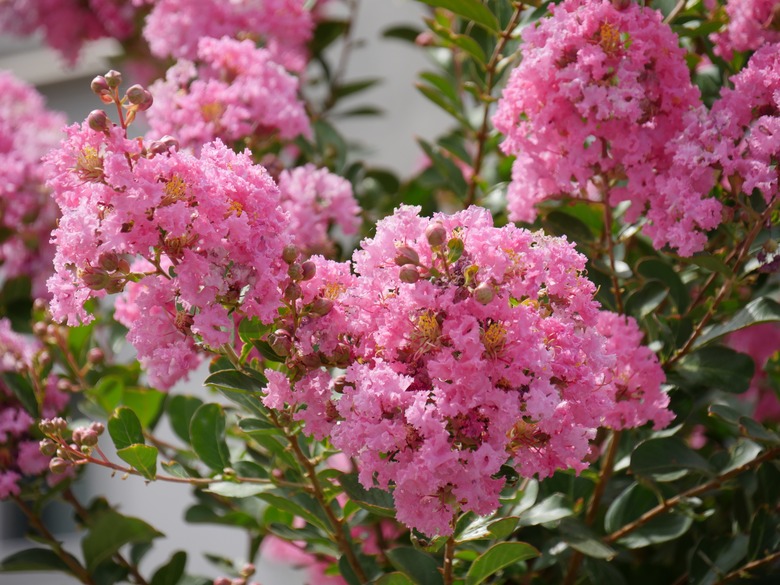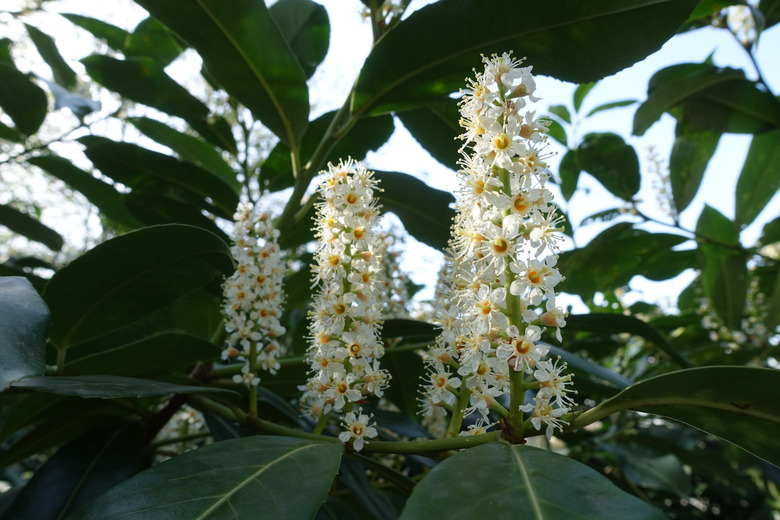The 6 Best Trees For Lining Driveways
We may receive a commission on purchases made from links.
Lining a driveway with trees creates the impression of an elongated, grand, and stately entrance to your property. It's no wonder that this classic landscape technique, also called an allée or colonnade, is so popular. However, there are things to consider when choosing the right species to line your driveway, including available space, toughness, and whether they produce messy seeds or fruits. Climate and soil type are also considerations as in every landscaping situation.
There are two approaches to planting trees along your driveway. You can use trees with a tight, columnar growth habit, making sure to allow adequate space for the tree's mature size. Or you can plant trees with a wider canopy that can be limbed up to keep branches away from car doors and delivery trucks. The largest trees create a lovely effect when branches arch over the driveway and create a tunnel. Be careful, though, to choose trees that won't damage sidewalks or driveways with large surface roots. Those with an upright growth pattern and a mature height under 50 feet make the best choice for most properties. Here are a few of the best trees to line driveways.
1. Flowering Crabapple
1. Flowering Crabapple
Small, flowering trees typically have a short lifespan, but the truly tough crabapple (Malus species) has been known to live for more than 50 years. This ancestor of orchard apples grows best in full sun, eventually reaching 10 to 25 feet tall. With more than 1,000 known varieties, crabapples can be grown in most climates. Newer, less messy varieties have small fruits that persist on the branches until winter. Crabapples can be susceptible to fire blight and fungal diseases, so choose one known for disease resistance. You'll be blessed with pretty, pinkish flowers each spring.
2. Emerald Green Arborvitae
2. Emerald Green Arborvitae
Many homeowners have made the mistake of planting arborvitae too densely, only to find they quickly overtake a driveway. But the Thuja occidentalis 'Emerald Green' is a tight, columnar arborvitae that won't outgrow its boundaries. Hardy in U.S. Department of Agriculture plant hardiness zones 3 to 7 (and maybe zone 2 with protection), 'Emerald Green' only grows to 4 feet wide by 15 feet tall. This arborvitae also grows slowly, allowing plenty of opportunities to give its thick evergreen foliage a light haircut with the pruning shears. Plant in full to part sun in well-drained soil.
3. Ginkgo Biloba
3. Ginkgo Biloba
The ginkgo, or maidenhair tree, has remarkable fan-shaped leaves that turn bright yellow in fall. Gingko biloba is a popular street tree due to its toughness, long lifespan, and small stature. This tree grows a foot or two a year, eventually reaching 25 to 50 feet tall. Ginkgos naturally have a rounded form, but you can also find narrow, columnar varieties such as Sky Tower. Ginkgos grow in full to part sun in USDA zones 3 to 8 but won't do well in a hot, dry climate. Choose a male ginkgo tree to avoid the stinky fruit.
4. Chinese Pistache
4. Chinese Pistache
Chinese pistache (Pistacia chinensis) is a drought-tolerant shade tree that does well in most soils in full sun for USDA zones 6 to 9. This medium-sized tree can grow 35 to 50 feet tall but doesn't have aggressive roots. Chinese pistache sports compound leaflets that turn bright yellows, oranges, and reds in the fall. Female trees will produce berries.
5. Crape Myrtle
5. Crape Myrtle
Common crape myrtle (Lagerstroemia indica) is a small tree with showy flowers that thrives in the hot south. The smooth, mottled trunk of crape myrtle is attractive in winter as well. Crape myrtles require little space to grow and can reach up to 30 feet in height, depending on the cultivar. They're hardy in USDA zones 6 to 9 and require full sun for the best summertime blooms. Crape myrtles often have a multi-stemmed trunk, but you can plant the tree to orient stems away from the driveway.
6. Cherry Laurel
6. Cherry Laurel
Cherry laurel, or Prunus caroliniana, is a small evergreen tree with glossy, oval leaves and frothy white flowers. When trained with a central leader, cherry laurel becomes an attractive tree reaching 25 to 40 feet tall. These shrubby trees can be pruned as a hedge as well. Cherry laurel's black fruits are inedible and can be messy, but this tree is tolerant of most soils, sun and shade, drought, and even salt, making it an excellent choice in warm, coastal areas in zones 8A to 10A.

